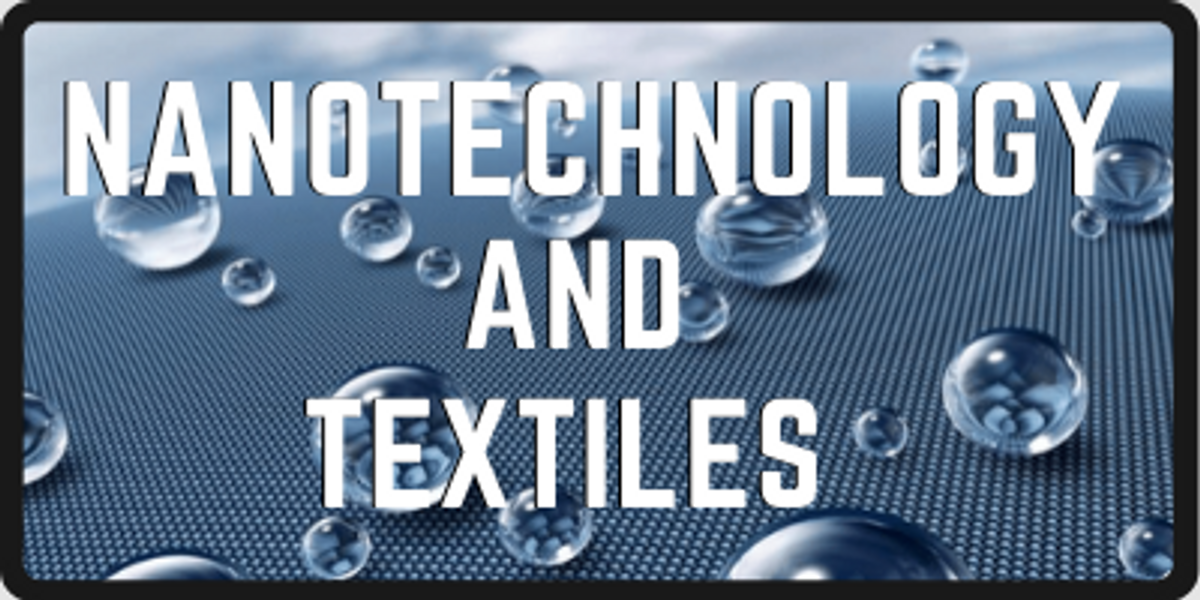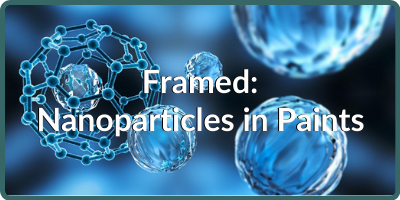Nanotechnology and Textiles - Nanografi Blog
Nanotechnological applications have attracted great attention in the textile industry. Desired properties of cotton fabrics and synthetic fabrics are brought together with the incorporation of nanomaterials. Durability and novel properties are incorporated into conventional textile products.
The textile industry is one of the largest industries in the world and it keeps growing each day. The industry mainly focuses on the design, production, and distribution. Nanotechnological applications on textile production have been attracting a lot of attention as the industry evolves. Nanotechnology deals with matter at the nanoscale. At this scale, the properties of materials change due to quantum effects.
Cotton fabrics are known to offer high absorbance properties, breathability, soft texture, and comfort. However, they are prone to creasing, burning, and staining. Furthermore, cotton fabrics show low strength and durability. Synthetic fabrics provide strength, durability, dirt resistance, and crease resistance. However, they lack the comfort of cotton fabrics. Nanotechnology offers to bring the best of both worlds into future textile products. Nanostructures can be easily incorporated in fabrics leading to unique innovative products. The effects of nanotechnology on the textile industry are quite obvious since it is of interest to many people and also the fashion industry. Nanoengineered textiles have been featured in major fashion shows and trend-setting brands. Extreme sport wear companies that produce durable and functional clothing for skiing, mountaineering, diving, and surfing have also shown a lot of interest in the nanoengineered textiles.
Applications of Nanotechnology in Textiles
Nanotechnological applications in the textile industry focus both on the production process of fibers and the improvement of textile products. Through the incorporation of nanomaterials, it is possible to provide oil and water repellence, antibacterial properties, UV blocking, wrinkle resistance, strength enhancement, self-cleaning, flame-retardancy, novel electronic, and anti-static properties.,
Oil and Water Repellence
Water repellency is a desired property for the outerwear clothing pieces. Water repellence usually achieved through high contact angles on the surface. It is possible to achieve high contact angles by creating nanowhiskers on the fabric surface. The gaps between these whiskers are smaller than a water droplet but larger than a water molecule creating a high surface resistance. High surface resistance forces water droplets to maintain their spherical shape and roll-off from the surface. Using silica (SiO2) in combination water-repellent polymers also provides water repellent properties to textiles. While SiO2 provides surface roughness water-repellent polymers lower the surface energy. The combination of these effects results in a high contact angle.
Oil repellency is provided by coating the fabric with silicone nanofilaments and plasma fluorination treatment. The resulted product repels alkane molecules. It is possible to induce both hydrophobic and oleophobic properties to textiles. For such surface properties, hydrophobic SiO2-PDMS coating is treated with perfluoroalkyl chain [1]. Through oil repellant technologies it is possible to produce self-cleaning textiles.
Antibacterial Properties
Antibacterial and antifungal properties are highly desirable in innovative fabrics due to hygienic concerns. Antibacterial and antifungal properties are utilized for various different clothing items. For example, incorporating antibacterial and antifungal properties into socks reduce odor and itchiness. Ag, TiO2, and ZnO nanoparticles have the potential to provide antibacterial and antifungal properties to fabrics. Ag+ ions from Ag nanoparticles diffuse through the cell membrane and intervene with cell functions. Oxygen is essential for the release of Ag+ ions since this process is an oxidation reaction. Antibacterial properties of Ag+ ions stem from cell growth inhibition, reduced respiration, structural changes in the cell wall, and inhibition of enzyme activity [1].
Also, the photocatalysis properties of TiO2 NPs can be utilized to obtain antibacterial fabrics. Upon illumination, TiO2 NPs oxidize organic substances such as odor particles, bacteria, and viruses into CO2 and water. ZnO NPs operate in a similar way to TiO2 NPs to provide antibacterial properties. Much like oil repellant properties, antimicrobial and antifungal properties opens the door to self-cleaning textile products [2].
UV Blocking
Certain inorganic semiconductor nanostructures such as TiO2, ZnO, SiO2, and Al2O3 are used for the UV protection of fabrics. These nanoparticles absorb and scatter UV radiation. The size of NPs must be ten times smaller than the fourth power of the wavelength of scattered light. For example, to scatter light at 200-400 nm wavelengths NP size must be around 20-40 nm. TiO2 nanoparticles are coated on the fabric by using the sol-gel method. These coating can withstand up to 50 launderings [1].
Wrinkle Resistance
The conventional method to reduce wrinkle formation is incorporating resin into the fabric structure. However, resin decreases the tensile strength, abrasion resistance, and dyeability of the fabric. Wrinkles are formed due to the re-arrangement of hydrogen bonds upon applying force on the fibers. To prevent this re-arrangement, nano TiO2 and nano SiO2 are employed in the presence of a catalyst to prevent wrinkle formation.
Strength Enhancement
Conventional fibers and yarns used in the textile industry have low tensile strength for innovative applications. Carbon nanotubes (CNT) reinforced polymer nanofibers are used to improve strength, toughness, and reduce the weight of fabrics. High strength fibers are used in electronic textiles, energy storage, and radio and microwave absorption. CNT reinforced fibers are produced through electrospinning while the same benefits of CNTs can be utilized through dipping and coating method. CNT incorporated yarns and fibers exhibit Young’s modulus in the TPa range, the tensile strength of 200 GPa, elastic strain up to 5%, and breaking strain of 20%. These nanoengineered fabrics offer strength while still maintaining a comfortable, soft structure [3].
Electronic Applications
The electrical behavior of fibers can be modified to incorporate sensors, actuators, antistatic properties, electromagnetic shielding, thermal resistance, and microwave attenuation. For example, combining SiO2 NPs with polyimidoamine fibers through spinning enhance its mechanical and antistatic properties and create conductive channels on the fiber surface. SiO2 NPs coatings also increase the thermal resistance and tenacity of the fabric. Au NPs can also be incorporated into polymer networks of the fiber to obtain similar properties. Furthermore, Au NPs containing coatings are considerably durable and resistant to external mechanical forces.
Another hot topic on innovative fabrics design world is energy-storing fabrics. For this purpose, flexible and lightweight supercapacitors can be incorporated into the fabric structure. Carbon nanotubes (CNTs) in combination with a conductive polymer have the potential to be used as flexible supercapacitors. This combination leads to a fabric that converts solar energy into electrical energy and stores it in its structure. Electrostatic energy can also be harvested by incorporating ZnO nanorods into the fabric structure. These fabrics can generate an output of 120 V at 65 μA. By the addition of discharge films, piezoelectric effect and electrostatic effect are combined to create a nanogenerator on the fabric. Considering how dependent we have become to electrical energy, improvements in these types of fabrics are very attractive.
Supercapacitors waved into the fabric itself through modified yarns. Soft yarns can be modified by treating with MnO2 nanosheets and reduced graphene oxide. These composite fabrics have the potential to be used in batteries.
Nanotechnology also enables the fabrication of Schottky diodes. ZnO nanorods are grown on Ag-coated textiles to obtain Schottky diodes. These fabrics can be used for switched-mode power supply, voltage clamping, and reverse current and discharge protection [1].
Flame-Retardant Fabrics
Flame retardant fabrics don’t continue burning upon removing the fire source. For the flame-retardancy, silica-based sols can be coated onto the cotton fibers through the sol-gel method. In this method, gelatin is used as a flame retardant additive with silica and a cross-linking agent. However, this method comes with the questionable effect of silica on human health. Silica can be harmful to the human body depending on the treatment method and used concentration. A safer way to obtain fire retardant textiles is through polyetherimide (PEI) nanocomposite foams. Kraton or nanoclays can be combined with PEI to create these nanocomposite foams. Coating these foams onto fabrics provides better thermal stability while decreasing the toxic emissions. Another method to provide flame-retardant properties to fabrics is colloidal antimony pentoxide coating. Flame-retardant fabrics are considered to be used for child pajamas, the foam in child car seatings, and other articles of clothing that are at the risk of being exposed to fire [4].
Anti-static Fabrics
Hydrophobic fibers such a polyester and nylon create a static charge due to their lack of moisture. In order to dissipate this static charge, electrically conductive TiO2 NPs, ZnO whiskers or antimony (Sb) doped tin oxide (SnO2) are incorporated in the textile structure. For example, utilizing ZnO nanoparticles reduce the charge density of the fabric from 58 to 0.95. Alternatively, silane nanosol reduces static charge by absorbing moisture from the air [2]. Commercially, poly(tetrafluoroethylene) PTFE creates a membrane immobilizing NPs to induce antistatic properties. This application is advantageous since the membrane coating doesn’t wash-off during laundry.
What is the Importance of Nanotechnology in the Textile Industry?
Much like any other major industries, nanotechnology has been taking the lead role in the textile industry. Innovative features and desired properties are incorporated into conventional textiles for both technological improvements and customer satisfaction. Amongst these nanotechnological applications TiO2, SiO2 and ZnO nanoparticles and Carbon nanotubes hold a considerable place. Through utilizing nanotechnology; anti-static, antibacterial, electronic, flame retardant, water and oil repellence, odor control, anti-wrinkle, and UV protective properties can be incorporated into conventional fabrics. Furthermore, nanotechnologically engineered fabrics are much more flexible and lightweight compared to traditional fabrics. When all these matters are considered it is clear that nanotechnology has an important role in the future of the textile industry.
Click Images to Read More About Our Articles
References
1. Yetisen, A.K., et al., Nanotechnology in textiles. ACS nano, 2016. 10(3): p. 3042-3068.
2. Das, S.C., et al. Application of Nanotechnology in Textiles: A Review. in International Conference on Mechanical Engineering and Renewable Energy. 2013.
3. Sawhney, A.P.S., et al., Modern applications of nanotechnology in textiles. Textile Research Journal, 2008. 78(8): p. 731-739.
4. Olawoyin, R., Nanotechnology: The future of fire safety. Safety science, 2018. 110: p. 214-221.
Recent Posts
-
Turning Noise into Power: Energy Harvesting with Piezoelectric Nanogenerators
Ambient acoustic energy, once an untapped resource, is now being converted into sustainable electric …5th Mar 2025 -
Holey Super Graphene in Li-ion Batteries: Next Generation of Energy Storage
Holey Super Graphene (hG), also referred to as “holey graphene,” is redefining li-ion ba …7th Feb 2025 -
Future Communication with 5G Technology and Advanced Materials
5G technology opens the doors to a new era in communication with faster connection speeds, low laten …6th Feb 2025








